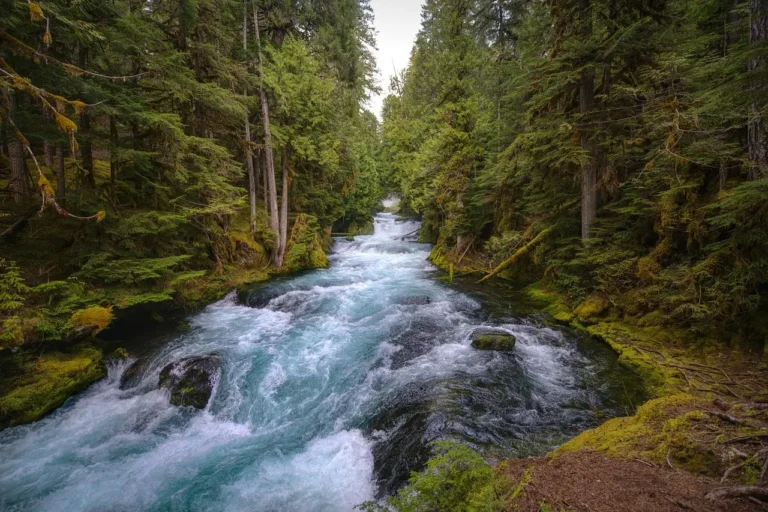Jammu and Kashmir (J&K) is home to many rivers that play a vital role in the economy, culture, and ecology of the area.
Rivers of Jammu and Kashmir
Here is a list of some of the major rivers in Jammu and Kashmir | intro, area, length, and other important factors:
Also Read:- Lakes in J&K
Jhelum River
The Jhelum River is also known as Vitasta, and it originates from a spring at Verinag in south Kashmir.
It flows through Srinagar and enters Pakistan, where it joins the Chenab River.
- Length – 725 km
- Area – 32,000 km2
- Origin – Verinag
Chenab River
The Chenab River is one of the major rivers in J&K, and its source lies in the upper Himalayas in Lahaul and Spiti.
It flows through J&K and Punjab before joining the Indus River in Pakistan.
- Length – 960 km
- Area – 1,41,600 km2
- Origin – Lahaul and Spiti.
Indus River
The Indus River is one of the longest rivers in the world, and its source lies in Tibet.
It flows through J&K, Punjab, and Sindh before entering the Arabian Sea in Pakistan.
- Length – 3180 km
- Area – 11,65,000 km2
- Origin – Tibet
Tawi River
The Tawi River is a major tributary of the Chenab River, and it originates from the Kali Kund glacier near Kali Chui in Himachal Pradesh.
It flows through Jammu and enters the Chenab River near Akhnoor.
- Length – 158 km
- Area – 4,400 km2
- Origin – Kali Kund HP
Lidder River
The Lidder River is a major tributary of the Jhelum River, and it originates from the Kolhoi Glacier near Sonamarg.
It flows through the Kashmir Valley and joins the Jhelum River at Mirgund.
- Length – 725 km
- Area – 1,200 km2
- Origin – Kolhoi Glacier
Zanskar River
The Zanskar River is a tributary of the Indus River, and it originates from the Zanskar Range in Ladakh.
It flows through the Zanskar Valley and joins the Indus River near Nimmu.
- Length – 425 km
- Area – 14,000 km2
- Origin – Zanskar Ladakh
Shyok River
The Shyok River is a tributary of the Indus River, and it originates from the Rimo Glacier in Ladakh.
It flows through the Shyok Valley and joins the Indus River near Skardu.
- Length – 550 km
- Area – 14,000 km2
- Origin – Rimo Glacier
Nubra River
The Nubra River is a tributary of the Shyok River, and it originates from the Siachen Glacier in Ladakh.
It flows through the Nubra Valley and joins the Shyok River near Diskit.
- Length – 60 km
- Area – 3,500 km2
- Origin – Siachen Glacier
Ravi River
The Ravi River is a transboundary river that flows through J&K, Himachal Pradesh, and Punjab before entering Pakistan.
It originates from the Bara Bhangal area of the Himalayas and flows through the Chamba Valley before entering Pakistan.
- Length – 720 km
- Area – 22,000 km2
- Origin – Bara Bhangal
Beas River
The Beas River is a transboundary river that flows through J&K, Himachal Pradesh, and Punjab before entering Pakistan.
It originates from the Beas Kund in the Himalayas and flows through the Kullu Valley before joining the Sutlej River in Punjab.
- Length – 470 km
- Area – 20,303 km2
- Origin – Beas Kund Himalayas
Kishanganga River
The Kishanganga River, also known as the Neelam River, is a tributary of the Jhelum River, and it originates from the Krishansar Lake in the Himalayas.
It flows through the Kishanganga Valley and enters Pakistan, where it is known as the Neelam River.
- Length – 158 km
- Area – 7,030 km2
- Origin – Krishansar Lake
Suru River
The Suru River is a tributary of the Indus River, and it originates from the Panzella Glacier in Ladakh.
It flows through the Suru Valley and joins the Indus River near Kargil.
- Length – 185 km
- Area – 5,570 km2
- Origin – Panzella Glacier Ladakh
Dras River
The Dras River is a tributary of the Suru River, and it originates from the Machoi Glacier in the Zanskar Range.
It flows through the Dras Valley, which is known as the “Gateway to Ladakh”, before joining the Suru River near Kharul.
- Length – 74 km
- Area – 1,128 km2
- Origin – Machoi Glacier
Nallah Sindh River
The Nallah Sindh River is a tributary of the Jhelum River, and it originates from the Gangbal Lake in the Himalayas.
It flows through the Sindh Valley and joins the Jhelum River near Shadipur.
- Length – 107 km
- Area – 1,720 km2
- Origin – Gangbal Lake
Romushi River
The Romushi River is a tributary of the Suru River, and it originates from the Romushi Glacier in Ladakh.
It flows through the Romushi Valley and joins the Suru River near Sankoo.
- Length – 75 km
- Area – 1,100 km2
- Origin – Romushi Glacier
Astore River
The Astore River is a tributary of the Indus River, and it originates from the Rupal Glacier in Gilgit-Baltistan.
It flows through the Astore Valley and joins the Indus River near Bunji.
- Length – 120 km
- Area – 3,619 km2
- Origin – Rupal Glacier Gilgit
River Origins
The origins of all the major rivers in j&k with approx. length.
| Name of River | Origin | Length (km) |
| Jhelum River | Verinag Spring, Anantnag District | 725 |
| Chenab River | Bara Lacha Pass, Lahaul and Spiti | 960 |
| Indus River | Tibetan Plateau | 3,180 |
| Tawi River | Kud, Udhampur District | 158 |
| Lidder River | Kolhoi Glacier, Anantnag | 73 |
| Zanskar River | Zanskar Range, Ladakh | 400 |
| Shyok River | Rimo Glacier, Karakoram Range | 550 |
| Nubra River | Siachen Glacier, Ladakh | 125 |
| Ravi River | Bara Bhangal, Himachal Pradesh | 720 |
| Beas River | Beas Kund, Himachal Pradesh | 470 |
| Kishanganga River (Neelam River) | Krishansar Lake, Himalayas | 158 |
| Suru River | Panzella Glacier, Ladakh | 185 |
| Dras River | Machoi Glacier, Zanskar Range | 74 |
| Kishen Ganga River | Gurez Valley, north Kashmir | 158 |
| Nallah Sindh River | Gangbal Lake, Himalayas | 107 |
| Romushi River | Romushi Glacier, Ladakh | 75 |
| Astore River | Rupal Glacier, Gilgit-Baltistan | 120 |
Read More:- Flora and Fauna J&K
FAQ’s
-
Which is the longest river in Jammu and Kashmir?
The Indus River is the longest river in Jammu and Kashmir, stretching over 3,180 kilometers.
-
Which river in Jammu and Kashmir is known as the “Lifeline of Kashmir”?
The Jhelum River is known as the “Lifeline of Kashmir” because it is the primary source of water for the Kashmir Valley
-
What is the significance of rivers in Jammu and Kashmir?
They provide water for irrigation, drinking, and power generation, and support diverse aquatic ecosystems
-
How many rivers flow through Jammu and Kashmir?
Jammu and Kashmir is home to many rivers, including three major rivers – Jhelum, Chenab, and Indus – and several tributaries.
-
How do rivers in Jammu and Kashmir influence the local economy?
Rivers in Jammu and Kashmir are important for the local economy as they support agriculture, horticulture, fisheries, hydropower generation, and tourism, which provide livelihood




